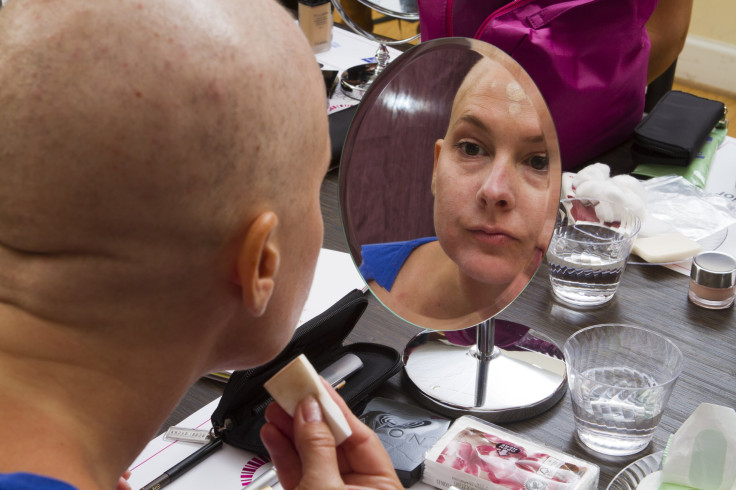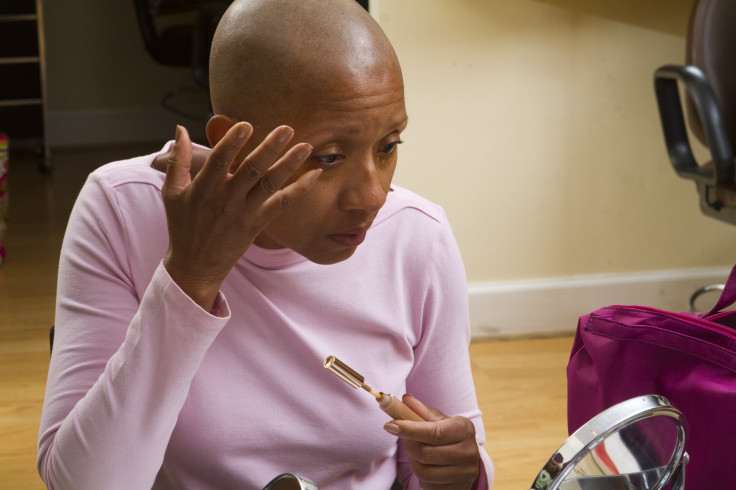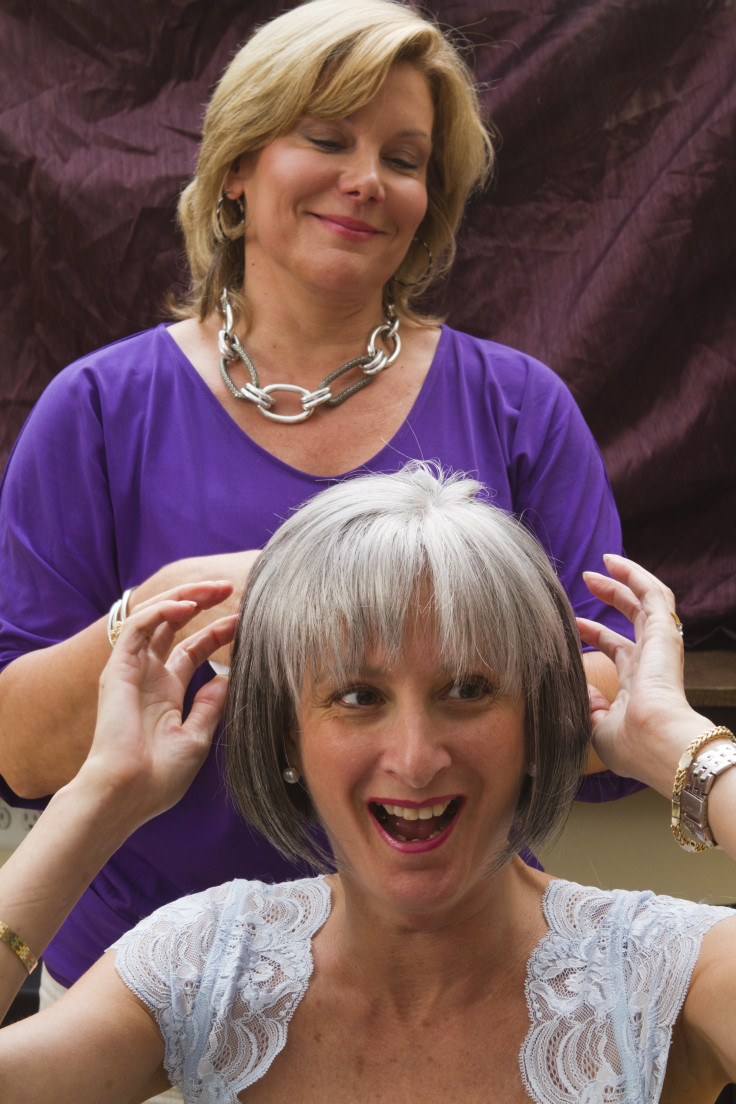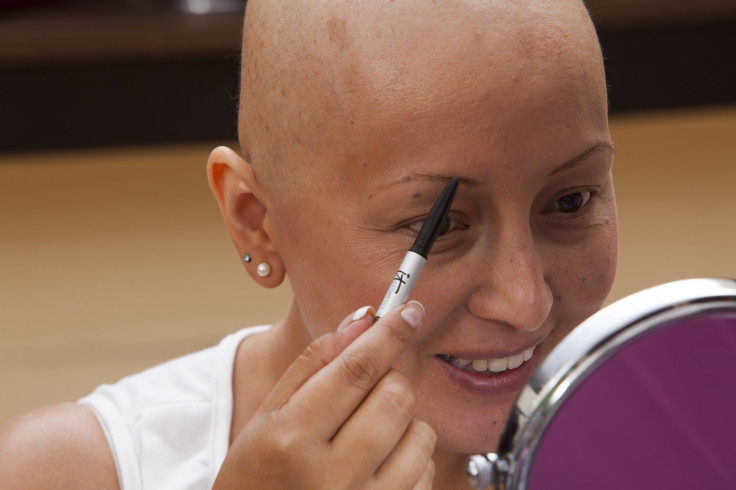Look Good Feel Better Celebrates 25 Years Helping Women With Appearance-Related Side Effects

When you think of a cancer diagnosis, it’s the chemotherapy, the inundating medicines, life-altering decisions, and hospital that flood your mind — not makeovers. Look Good Feel Better (LGFB) is celebrating its 25-year anniversary providing women with the public service of beauty workshops to improve self-esteem and quality life for women at this difficult time in their life.
“Many women, even those who have never used make up, attend these workshops,” LGFB’s Beauty Expert Linda Whitehurst, who has been with the organization since the beginning, told Medical Daily. “When you lose your lashes and brows, the eyeliner is key to giving them the appearance of lashes. Eyebrows are one of the biggest parts and areas of concern. It’s not just one thing. It’s losing the hair, the face changing, gaining or losing weight.”
But the importance of reflecting outer beauty when test tubes and tiring treatments make a patient feel not so glamorous can improve their overall wellbeing and attitude. The appearance-related side effects of cancer can drain, demoralize, and lose a person’s sense of identity during their struggle to navigate through treatments. Whitehurst, who teaches the workshops twice a month said she has seen the informal level of bonding and support from woman at the workshops create a healthy peer environment.
If you can’t attend a group, Whitehurst said the new virtual makeover component provided on their website and on mobile apps is popular among teenagers undergoing chemotherapy, radiation, or other forms of treatment. The patient uploads a headshot and adjusts their makeup, hair, face, and styling along with tips designed for patients.

Some side effects of chemotherapy damage bone marrow, hair follicles, cells in the mouth, digestive tract, and productive system. Some drugs can damage the heart, kidney, bladder, lungs, and nervous system, according to the American Cancer Society. But that’s all beneath the skin. On the surface, the skin can become discolored, highly sensitive and dry, while the face may thin and hollow. Locks of hair, including eyebrows and lashes, will fall out, and weight fluctuations occur. It makes it more difficult to get out of bed and remain motivated and uplifted when you not only feel sick and tired, but also don’t look like yourself anymore.
It was Ed Kavanough, the former president of the Personal Care Products Council, who recognized the need for providing women with an uplifting makeover during this difficult period in their life. In 1987, he became “instrumental in seeing the necessity and demand and pulling it all together,” LGFB Executive Director Louanne Roark, who started with the organization in 1990, told Medical Daily. He was emotionally struck by one patient who became a recluse during her diagnosis when her appearance began to diminish and was rejuvenated when she received a makeover.

“Since we began, we’ve developed a level of sophistication that’s gone beyond what we could have imagined,” Roark said. “Moving forward, we want to expand our online presence and facilities to reach all women who want to participate in workshops. Accessibility is key in helping as many women as possible.”
The program currently has more than 15,800 group workshops nationwide in 2,400 locations in addition to local community branches in 25 different countries in order to provide for women suffering abroad. With the program’s goal to improving self-confidence, there is no border they can’t cross. They’ve also developed three key partnerships that are integral to the success of the program.
The Professional Beauty Association is where they recruit licensed aestheticians and cosmetologists to volunteer, while Personal Care Products Foundation supplies them with donated cosmetic products from various organizations that provide the women with quality makeup and accessories for workshops and patients’ take home packages. The American Cancer Society is also a partner with LGFB, connecting the organization with individual patients, hospitals, and facilities who could benefit from their beauty care services.
All of the makeovers are free, and over the last 25 years 1.5 million cancer patients have benefited from the program. The trained volunteers are the foundation of the organization, and every year more than 6,000 volunteers dedicate their time to working with cancer patients with an informed and skilled fashion.
“With the workshop format, there’s a huge benefit for women in group settings,” Roark said. “The outcome is always remarkable. They never know exactly what they’re walking into and they come into the workshops quiet and then you see them bloom.”

The workshop facilitators are trained to redirect conversations that become too medically depressing and remind women of their ailments. The workshops are not meant to be support groups where women discuss the struggles of new treatments, prescriptions, and life adjustments. While cancer patients have a lot to cope with, LGFB designs its workshops, website, and at-home kit packages to ease the stress. Makeup tutorials, scarf-wrapping, and wig training are often overlooked in the healing process, but workshops aimed at improving physical appearance may create a positive emotional environment for an otherwise bleak hurdle in their life.
“It gives them a sense of control because when you’re diagnosed with cancer you have to make many important medical decisions in a short period of time,” Roark said. “Taking control of your appearance is very empowering.”



























